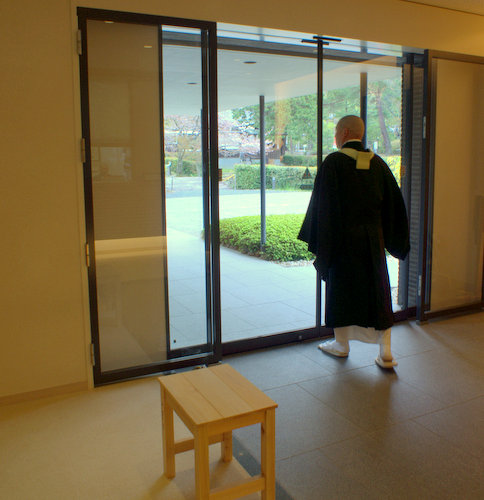A Nanzen-ji Temple story

The young man writes that he’s staying in a temple on his customs form. An officer questions his entry, “How unusual,” and delays the boy’s entry into Japan as he consults his superior. Within a few minutes the matter is deemed inconsequential and the journey continues on through the airport, onto a bus and two hours later he arrives at the entrance to his temple lodging at Nanzen-ji in Kyoto.
Family and friends are waiting there for an evening in the simple, modern building. They are visiting for the night only to enjoy a Zen experience as part of their tour of the country. The rooms are comfortable but spare. Tatami mats are in the closet. A small table with floor cushions sits in the center of the room. The bathroom is not spared comfort with its ubiquitous electric, heated toilet and push button bidet.
Dinner is full of small dishes in Ryokan style, only there is no meat or fish on the tray set. Instead there are several types of tofu with sauces, pickled vegetables and a steaming soup with udon noodles and rice. It’s more complex than the resident monk’s average meal, but no one goes hungry at the temple of Nanzen-Ji.
Just outside the building stands one of the oldest temple gates in the country. It leads into a complex of ten temples all listed on the list of UNESCO World Heritage Sites. Early in the spring morning, the grounds are swept clear of falling cherry blossoms as the upstairs gallery is unlocked for visitors. With shoes carried in plastic bags, the boy climbs the steep, wooden steps and onto a narrow veranda, renowned for its vista across the metropolis of Kyoto and into the surrounding hills.
There are tended gardens, the remains of Emperors and their palace beyond the gate and an ancient stone aqueduct still carries water into the city as it has for centuries.
Most visitors miss the sacred shrine and waterfall up the trail beyond the aqueduct, but on this morning the young man walks up the stairs, past the Shinto shrines to trees and water, a shower that is used to train monks and freshly scrubbed shrine tiles when he stops to dip his fingers in the waterfall and offer a prayer of gratitude to the beauty and power of Nanzen-ji.
Photo courtesy of the author, Elaine J. Masters

0 comments